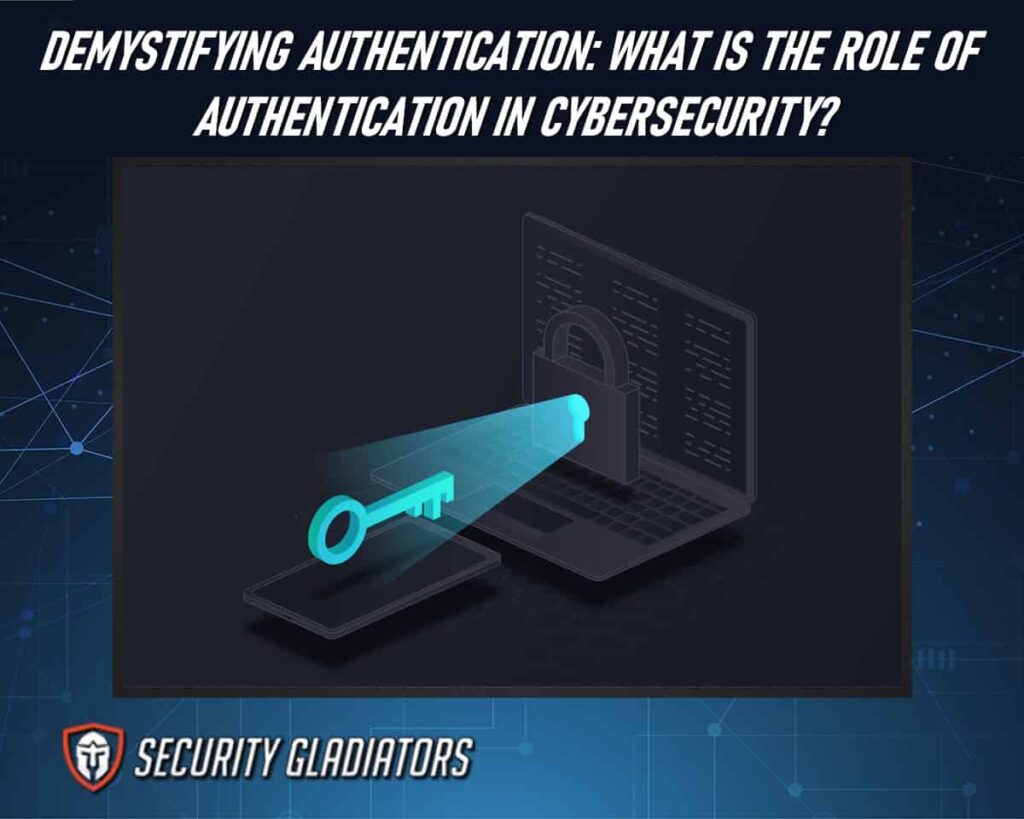
Understanding how authentication works is crucial for comprehending its significance in cybersecurity. Authentication involves various methods such as a security token, passwords, biometrics, certificates, and multi-factor authentication (MFA). Each method has its strengths and weaknesses in terms of security and usability. By examining these different types of authentication mechanisms and their applications, this guide will shed light on their roles in maintaining data confidentiality, integrity, and availability, as well as mitigating risks associated with cyber threats.
Table of Contents
What Is Authentication?
Authentication is a process that verifies the identity of an individual or system attempting to access a resource, thereby ensuring that only authorized entities are granted access. It plays a crucial role in cybersecurity as it serves as the first line of defense against unauthorized access and data breaches.
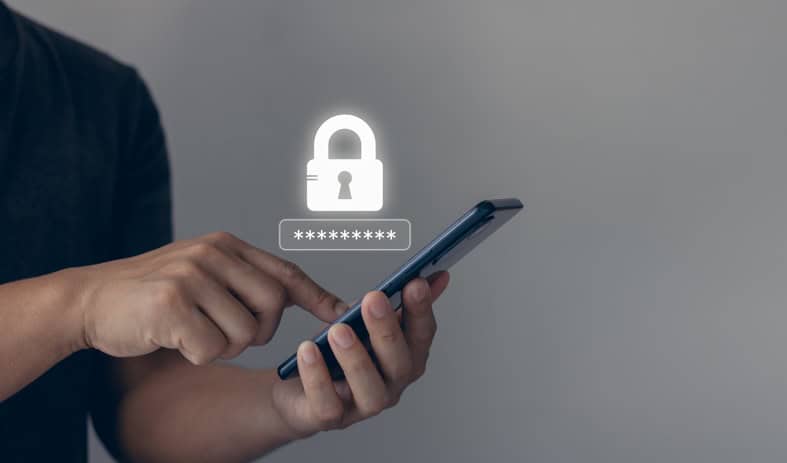
Authentication factors are used to establish and validate identity, often involving something the user knows (such as passwords), something they have (like smart cards or tokens), or something they are (biometrics). In recent years, there has been a shift towards multi-factor authentication, which combines two or more authentication methods for enhanced security. Additionally, passwordless authentication has gained popularity as it eliminates the need for traditional passwords and instead relies on alternative methods like biometrics or cryptographic keys. Authentication enables organizations to have peace of mind with their systems as they are assured of strong access control.
How Does Authentication Work?
Authentication involves the exchange of credentials, such as usernames and passwords, tokens, or biometric data, between the user and the authentication system. The authentication system then compares these credentials with stored or pre-registered information to determine whether the user’s claimed identity is legitimate. If the provided credentials match the stored data, the user is granted access, and if not, access is denied. Modern authentication methods often employ cryptographic techniques to secure the transmission and storage of credentials, enhancing the overall security of the authentication process.
The Role of Authentication in Cybersecurity
Authentication plays a crucial role in cybersecurity by serving as a fundamental line of defense in protecting sensitive data, systems, and networks from unauthorized access and security threats. Its key cybersecurity roles include:
Access Control
Authentication ensures that only authorized individuals, devices, or systems are granted access to sensitive resources. This helps prevent unauthorized users from infiltrating networks, databases, and applications.
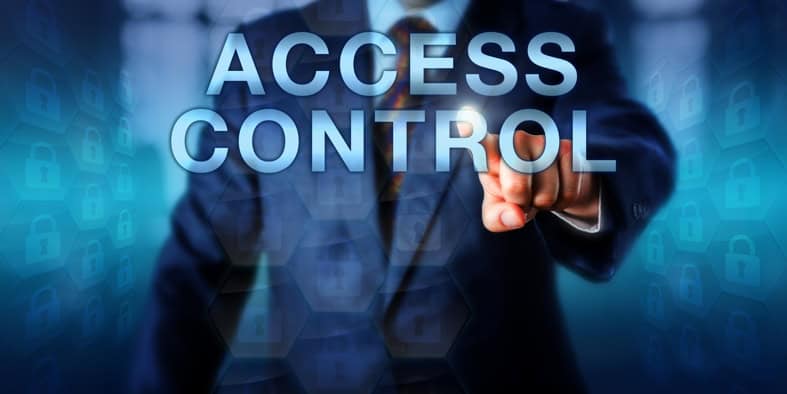
User Accountability
By requiring users to authenticate themselves, organizations can establish a digital trail of user activity, making it easier to track and trace any suspicious or malicious actions. This accountability is essential for investigations and incident response.
Data Protection
Authentication is a critical component in safeguarding confidential and sensitive data. Only authenticated users should be able to access, modify, or delete data, helping to maintain data integrity and confidentiality.
Mitigating Unauthorized Access
Cyber attackers often attempt to gain unauthorized access to systems and data. Strong authentication mechanisms, such as two-factor authentication (2FA) or multi-factor authentication (MFA), make it significantly more difficult for attackers to compromise accounts.
Preventing Identity Theft
Authentication helps in verifying the identity of users, reducing the risk of identity theft and fraudulent activities. By confirming the user’s identity through various means, such as passwords, biometrics, or tokens, organizations can ensure that they are interacting with the legitimate user.
Protecting Against Insider Threats
Internal threats from employees or trusted individuals are a significant cybersecurity concern. Authentication measures can help restrict access to only what is necessary for an individual’s role, limiting the potential for insider threats.
Compliance Requirements
Many regulatory frameworks and industry standards (e.g., GDPR, HIPAA, PCI DSS) mandate the use of strong authentication to protect sensitive information. Organizations must adhere to these requirements to avoid legal and financial consequences.
Secure Remote Access
In an increasingly remote and distributed work environment, authentication becomes critical for secure remote access to company resources. VPNs and remote access solutions rely on robust authentication to ensure secure connections.
Types of Authentication
Different methods of authentication are used in cybersecurity to verify the identities of individuals seeking access to systems or networks. These authentication methods can be categorized into different types based on their level of security and complexity.
These authentication methods include:
Password Authentication
Password authentication is a single-factor authentication that is widely used in cybersecurity and it involves users providing a unique code or phrase to verify their identity. It is one of the most common types of authentication methods implemented by organizations to secure access to their systems and data. In this method, users are required to create a password, which they must enter correctly to gain access. The password is then compared with the stored password on an authentication server, which determines whether the user’s provided password matches the one on record.
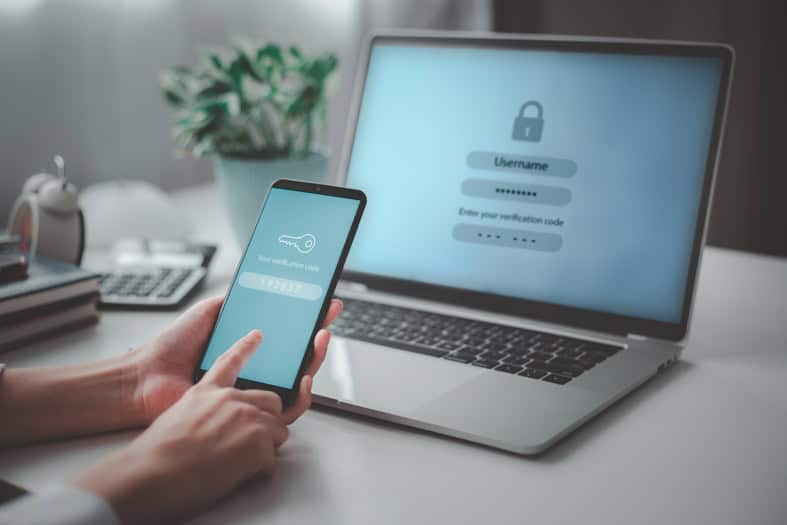
Password-based authentication has been favored for its simplicity and ease of use, but it also faces various security challenges. Weak passwords or poor password management practices can make it vulnerable to attacks such as brute force attacks or password guessing.
Note:
To enhance the security of password authentication, organizations often enforce certain measures such as strong password policies, multi-factor authentication, and regular password updates. Additionally, advancements in technology have led to the development of more secure forms of authentication like biometrics or token-based methods that offer higher levels of security than traditional passwords alone.Two-Factor Authentication
Two-factor authentication (2FA) is a robust security method that requires users to provide two distinct authentication factors to gain access to a system, application, or data. Typically, these factors fall into three categories: something you know (e.g., a password), something you have (e.g., a mobile device or smart card), or something you are (e.g., a fingerprint or facial recognition). By combining two factors, 2FA significantly enhances security compared to single-factor authentication. Even if one factor is compromised, an attacker would still need the second factor to access the protected resource, adding an extra layer of defense against unauthorized access and enhancing overall cybersecurity.
Multi-Factor Authentication
Multi-factor authentication, a widely adopted security measure, enhances the protection of systems and data by requiring users to provide multiple forms of verification beyond just a password. This method strengthens the overall authentication and authorization process by incorporating additional authentication factors. The use of multi-factor authentication introduces an extra layer of security that significantly reduces the risk of unauthorized access. By combining at least three authentication factors, such as something you know (password), something you have (smart card or token), and something you are (biometric traits like fingerprints or facial recognition), it becomes much more challenging for attackers to impersonate legitimate users.
This approach not only increases the complexity for potential hackers but also provides a more reliable means of verifying user identity. With multi-factor authentication, organizations can enhance their cybersecurity posture and mitigate potential risks associated with password-based authentication alone.
Biometric Authentication
Biometric authentication is a robust and increasingly prevalent method utilized in cybersecurity to enhance the security of digital systems. Biometric authentication utilizes unique physical or behavioral characteristics of individuals, including facial recognition, fingerprint scans, voice patterns, iris scans, or even keystroke dynamics. By capturing and comparing these biometric data with previously stored templates, systems can verify if it is the same user accessing an account with a high level of accuracy. The advantage of biometric authentication lies in its difficulty to duplicate or forge compared to traditional credentials that are susceptible to theft or hacking. Furthermore, it provides convenience for users by removing the need to remember complex passwords while still ensuring secure access to sensitive information.
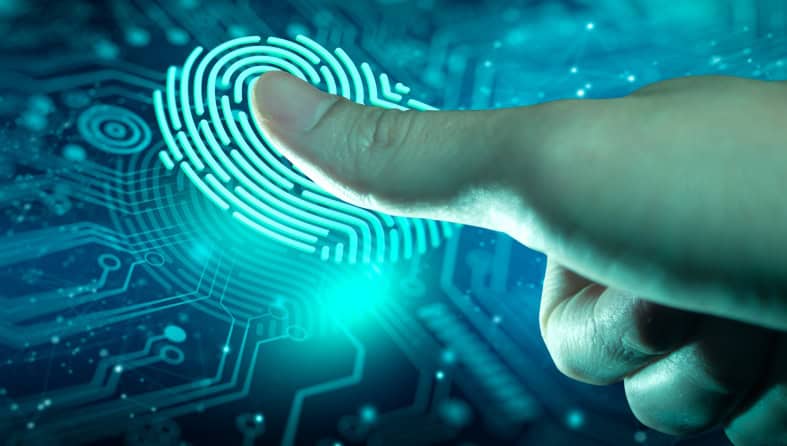
However, despite its effectiveness as an additional layer of security, biometric authentication also raises concerns about privacy and the potential misuse or unauthorized access to personal biometric data. To address these concerns and ensure proper implementation, organizations must adhere to stringent regulations regarding data protection and employ robust encryption methods when storing and transmitting biometric information.
Single Sign-On (SSO)
Single sign-on (SSO) is a streamlined authentication method that allows users to access multiple applications and systems with a single set of credentials, eliminating the need for separate login processes for each application. SSO simplifies the authentication process by enabling users to authenticate once and then gain access to all authorized resources without needing to re-enter their credentials. This not only improves user experience but also enhances security by reducing the risk of weak passwords or password reuse.
Certificate-Based Authentication
Certificate-based authentication is a highly secure authentication mechanism for verifying the identity of users or devices by utilizing digital certificates issued by trusted certificate authorities. This type of authentication relies on public key infrastructure (PKI) to establish trust and ensure the integrity of communication over networks. With certificate-based authentication, each user or device is assigned a unique digital certificate that contains their public key and other identifying information.
When authentication is required, the certificate is presented to the authentication system, which verifies its validity using cryptographic algorithms. The use of digital certificates enhances security as they are difficult to forge or tamper with, providing a strong level of assurance for identity authentication.
The benefits of certificate-based authentication include:
Strong Security
Digital certificates provide robust protection against unauthorized access and impersonation.
Scalability
Certificate-based authentication can be easily scaled to accommodate large numbers of users or devices.
Simplified Management
Digital certificates can be centrally managed, reducing administrative overhead.
Interoperability
Certificate-based authentication is widely supported across different platforms and systems.
Device authentication
Device authentication is another crucial aspect of the authentication process that enables organizations to secure their systems. Device authentication ensures the trustworthiness and integrity of devices accessing a network or system. This process involves validating the identity of a device by checking its unique identifier, such as a MAC address or digital certificate. By verifying the authenticity of devices, organizations can establish a trusted network environment where only authorized devices are allowed access.
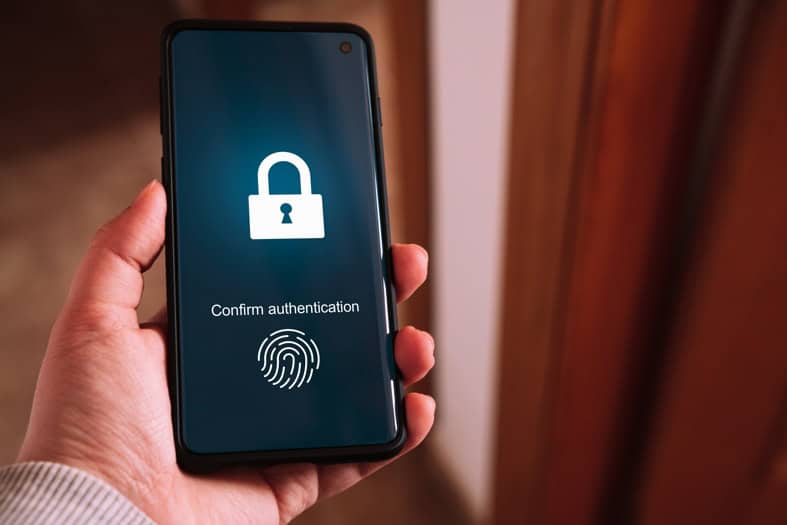
Device authentication plays a significant role in enhancing overall cybersecurity as it acts as an additional layer of security beyond user authentication. It helps prevent unauthorized devices from gaining access to sensitive information or compromising the network’s integrity. Incorporating device authentication into the authorization process strengthens security measures by ensuring not only user identity but also the legitimacy and safety of connected devices within an organization’s network infrastructure.
Tips on How To Improve User Authentication
Here are some of the tips that can help you enhance the authentication process:
Use a Strong Password
Using a robust and complex password is essential for enhancing the security of user authentication processes. A strong password serves as a barrier against unauthorized access to sensitive information and protects user credentials from being compromised. To ensure the user’s password is strong, it should be at least eight characters long and contain a combination of uppercase and lowercase letters, numbers, and special characters. Additionally, individuals should avoid using easily guessable passwords such as common words or personal information.
Use a Password Manager
Using a strong password is crucial in preventing unauthorized access to sensitive information. However, managing multiple complex passwords for various accounts can be challenging. This is where a password manager comes into play. A password manager securely stores and organizes all user IDs and passwords in an encrypted database. It eliminates the need to remember numerous passwords by providing a single master password that grants access to the stored credentials. When authentication work is required, the password manager automatically fills in the appropriate login details, ensuring convenience while maintaining security standards.
Update the Authentication System
Updating the authentication system is essential for organizations to ensure the continued protection of sensitive information and mitigate potential security vulnerabilities. With the rapid advancement of technology and the increasing sophistication of cyber threats, traditional authentication methods are no longer sufficient in providing adequate security measures. By updating the authentication system, organizations can implement more robust and advanced techniques such as API authentication and access tokens. These technologies enable digital authentication that goes beyond simple username-password combinations, adding an extra layer of security through encryption and multifactor authentication. Additionally, updating the authentication system allows organizations to stay ahead of emerging threats by incorporating the latest security protocols and algorithms. By regularly reviewing and updating their authentication systems, organizations can enhance their cybersecurity posture and safeguard against unauthorized access or data breaches.
Implement Automatic Logouts
Implementing automatic logouts enhances the overall security of an organization’s authentication system by reducing the risk of unauthorized access and protecting sensitive information from potential threats. Automatic logouts provide an additional layer of protection against unauthorized access by terminating user sessions after a specified period of inactivity. This helps prevent unauthorized individuals from gaining access to confidential data, as they would need to re-authenticate themselves before being granted access again.
Moreover, automatic logouts are particularly crucial in the context of mobile devices, which are more susceptible to loss or theft. By automatically logging out users when their devices are idle for a certain amount of time, organizations can mitigate the risk of unauthorized individuals gaining access to corporate resources through stolen or misplaced mobile devices. Additionally, implementing automatic logouts allows for better control and monitoring of user logs. System administrators can track user activity more effectively and identify any suspicious behavior that may indicate a cybersecurity breach.
Activate Device Recognition
Activating device recognition adds a layer of security to an organization’s authentication system, allowing for the identification and verification of trusted devices that have been previously used to access sensitive information. By implementing activated device recognition, organizations can ensure that only authorized devices are granted access to their systems. This authentication factor relies on the unique characteristics of each device, such as its hardware or software configuration, to create a digital fingerprint.
When a user attempts to log in from a recognized device, the system verifies this fingerprint and compares it with previously stored data. If the fingerprint matches, the user is granted system access without requiring additional authentication steps. However, if an unrecognized device is used, the user may be prompted for further verification through traditional methods like passwords or tokens generated on trusted mobile devices. This enhances security by reducing the risk of unauthorized access even if login credentials are compromised. Activating device recognition provides organizations with an effective means of strengthening their authentication processes and safeguarding sensitive information from potential threats.
Update the Recovery Process
To further enhance the security of authentication processes, it is crucial to continually update the recovery process. By updating the recovery process, organizations can ensure that users have a reliable and secure method to regain access to their accounts in the event of a forgotten password or compromised credentials. This update not only strengthens the overall security posture but also improves user experience by providing efficient and timely account recovery options.
Audit Authentication Logs
Authentication logs serve as a crucial tool in the realm of cybersecurity as they record information about each authentication event, such as login attempts and successful logins. By analyzing these logs, organizations can gain insights into the effectiveness of their authentication processes and determine if any vulnerabilities exist within their computer systems. Additionally, auditing authentication logs allows for the identification of potential weak points in the system, which can be addressed through strengthening or implementing additional authentication factors. This proactive approach helps organizations stay one step ahead of cyber threats by mitigating risks associated with unauthorized access and reducing the likelihood of security breaches.
Frequently Asked Questions
Why Is Authentication Important in Cybersecurity?
Authentication is a cornerstone of cybersecurity because it acts as the first line of defense against unauthorized access and malicious intrusions. By verifying the identity of users, systems, or devices attempting to gain access to sensitive data or resources, authentication ensures that only authorized entities can interact with these assets. Without proper authentication, malicious actors can exploit vulnerabilities, compromise confidential information, and disrupt critical systems. Strong authentication measures, such as multi-factor authentication, are essential in safeguarding digital environments and maintaining the integrity, confidentiality, and availability of valuable assets in an increasingly interconnected and threat-filled digital landscape.
Can Authentication Methods Be Bypassed or Hacked?
Authentication methods can indeed be bypassed or hacked, and the level of vulnerability depends on the method’s strength. Weak passwords are susceptible to brute-force attacks and dictionary attacks, where attackers systematically guess or use precompiled lists of possible passwords. Even multi-factor authentication (MFA) is not entirely immune, as social engineering attacks can trick users into providing their MFA codes or devices can be compromised. Therefore, it’s crucial to continually enhance authentication security and stay vigilant against emerging threats.
What Are Some Common Authentication Vulnerabilities?
Common authentication vulnerabilities include weak or easily guessable passwords, often chosen by users and susceptible to brute-force attacks. Password reuse is another issue, where users employ the same credentials across multiple services, making them more vulnerable to breaches. Phishing attacks are a significant threat, as they trick users into divulging their credentials or other sensitive information, undermining the effectiveness of even robust authentication methods.
What Is the Role of Authentication in Access Control and Authorization?
Authentication plays a pivotal role in access control and authorization by establishing the identity of users or entities seeking access to a system or resource. Once authentication confirms the identity, authorization determines what actions and resources the authenticated entity is allowed to access based on their permissions and privileges. In essence, authentication is the gatekeeper, while authorization defines the rules and restrictions that dictate what lies beyond that gate, ensuring that only authorized users can interact with specific data or perform certain actions.
Conclusion
Authentication serves as an essential component in cybersecurity strategies. Its role in verifying user identities cannot be overstated as it protects sensitive information from falling into the wrong hands. By implementing robust authentication measures and staying vigilant with updates and audits, organizations can bolster their cybersecurity defenses significantly. As technology continues to evolve at a rapid pace, authentication will remain indispensable in safeguarding digital assets from ever-evolving cyber threats.

